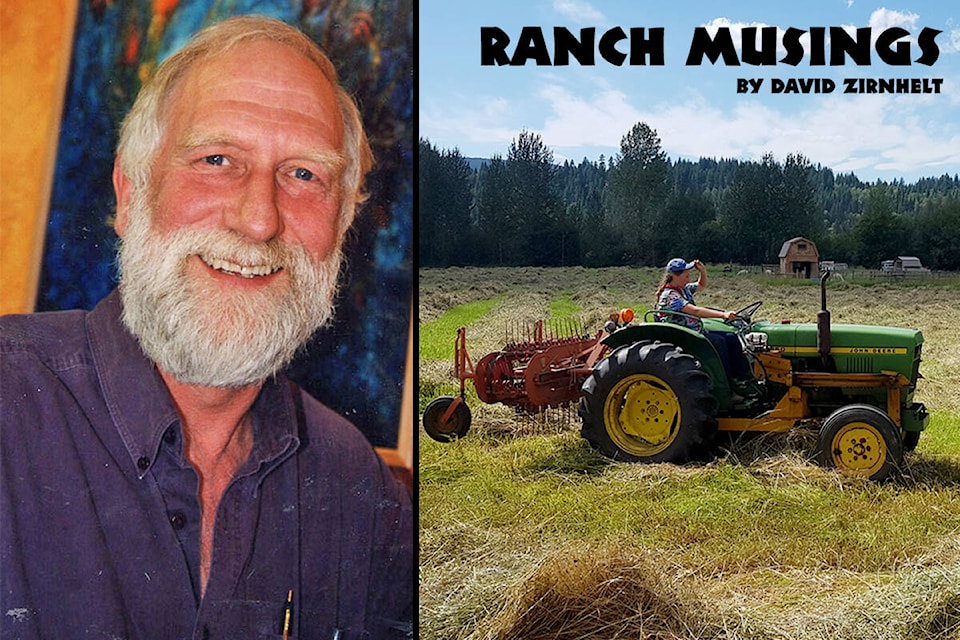In a recent column, I gave a thumbnail sketch of the origins of cattle livestock agriculture in Spain then moving with Spanish colonization to the Pacific islands, South America, on up to Central and North America.
The introduction of cattle into the Interior is not clear but a BC ranching historian (Ken Mather) has written that the Hudson’s Bay Company (HBC), which had fur trading rights in much of the new world, brought cattle to some of their forts in the mid-1820s, into New Caledonia ( a very large region) in the 1830s, to Fort Kamloops probably in the 1840s. The Journal of the HBC at Kamloops in the 1850s mentions a significant amount of raising of cattle and horses in the area.
At this point in time, there appear to have been significant numbers of horses. Horses took over from oxen as the main power to move goods into the Cariboo gold rush market. Many of the early horsemen and cattlemen (cowboys) were of Spanish (Vaqueros) and indigenous descent.
It seems that the great grasslands of the Interior were friendly for the most part in allowing many horses to survive without hay as a supplement. Cattle were a different matter, although many would survive if the winters weren’t too bad.
Until the turn of the century (1900) there was no regulation of the “open range” by the settlers or their government that was based on law.
Mather suggests in his book “Buckaroos and Mud Pups: The Early Days of Ranching in British Columbia” that the Spanish in North America turned out cattle in the BC Interior which lured indigenous people to be herdsmen because of their experience with horses.
He notes that Spanish packers (packhorse taking goods into the fur trading and mining areas) influenced the gear used in the pack trains by the often First Nations packers. At least one of the leaders of the “Chilcotin War” was recruited from a very successful career as a packer in the region.
In 1859 (Cariboo Goldrush peak was 1858-59) 500 cattle crossed the US border in the south Okanagan. In the following ten years, some 22,000 head were brought into southern BC.
It appears that the growth of cattle herding in BC lead to an epic cattle drive from the South Okanagan through a north Kootenay pass into what was to become the province of Alberta. At that time that area was part of the Northwest Territories. BC was brought into Canadian confederation by 1871.
A man by the name of Shaw drove the cattle, about 400 head, in 1875. Missionaries and fur traders were the small “market “in the western prairies near the foothills of the Rockies
Later cattle would come north from Oregon and Washington and Montana directly north into Alberta.
Now Alberta cattle numbers far exceed BC’s cattle population and is the predominant market for BC cattle.
Next week I will comment on the impact of the industry on the range environment of BC.
newsroom@100milefreepress.net
Like us on Facebook and follow us on Twitter.
